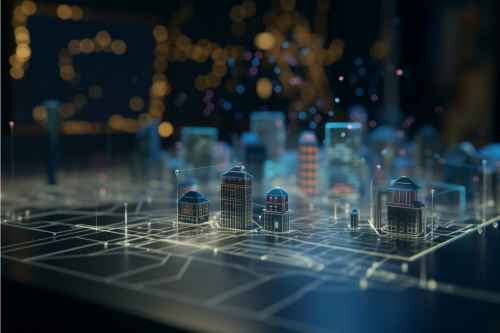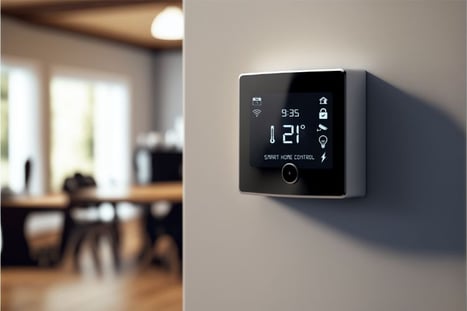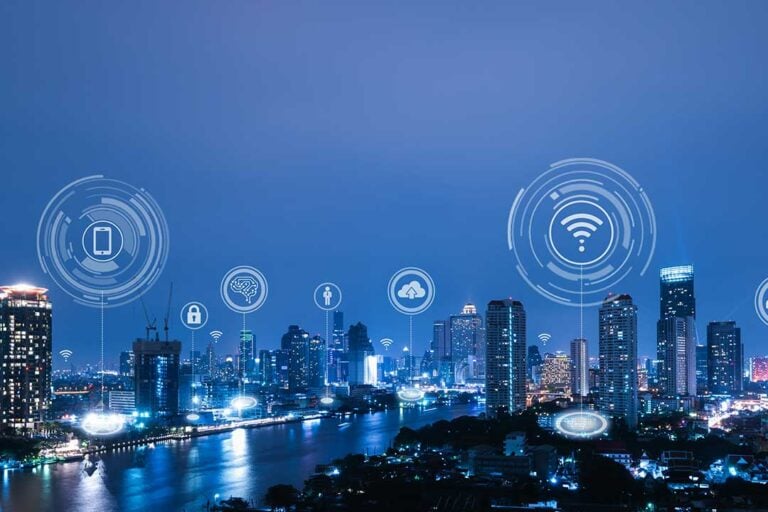How IoT Sensors and AI are Revolutionizing Smart Buildings
Originally written for Buildings.com

Heard the phrase ‘Internet of Things’ but not sure what it means? IoT integration underpins many of our business solutions. Read on for more.
Aside from recent advances in AI, the Internet of Things (IoT) is still one of the most important developing technologies today. Approximately two thirds of enterprises are already using IoT devices, and McKinsey have estimated that IoT could have an annual economic impact of as much as $11 trillion dollars in 2025 – that’s 11% of global GDP.
But, the complexity of the technology makes it daunting to non-experts who are curious to know more. In this blog, you can find out exactly what IoT is, what are Internet of Things devices, how they work, why so many businesses have already invested in IoT, and how it can transform facilities into smart buildings.
Simply put, the Internet of Things is a network of physical devices, including sensors that communicate using the Internet. IoT devices can collect and share data with other devices, applications, and systems.
From smart devices in the home to industrial machinery, IoT is used on a daily basis by many consumers and has been essential in factories for decades.
We’ve covered the dry definition of IoT, but you might just need a little extra colour to bring it to life.
Let’s imagine a temperature sensor installed in a thermostat. As the temperature in the room changes, the sensor tells the thermostat to adjust the heating or air-con automatically to maintain the target temperature throughout the day.

Unlike a father’s compulsive urge to turn off the heating in the middle of January, the sensor uses data, not feelings, to decide when to react to the changing environment.
Another example of IoT in action is using movement sensors to measure door opens in a public bathroom. When the door is opened a given number of times, a task is sent to a cleaner to visit the bathroom, give it a clean and restock the loo roll and soap dispensers. Instead of using a fixed schedule, you only clean when it’s actually needed, however busy it gets.
IoT devices or sensors can be simple or complex, but generally they are measuring something in the environment around them, and sending this information to a database or application.
The sensors are programmed to give a certain amount of information at a certain frequency: you don’t need to know that everything is fine, but you do need to know when that fridge has broken down.
IoT systems typically have four parts which we will explore below:
Wind speed, air quality, temperature, power draw, door opens and lighting levels are just some of the conditions that can be monitored. Smart cameras are still being worked out, but they have the potential to monitor demographics, detect security issues and watch for crowding or long queues.
Connectivity is a key consideration in implementing IoT and the costs associated can be significant, so it is worth weighing up the different options.
Some network types are suitable for larger amounts of data, others such as LPWAN have a long range and low power, while LoRaWAN has an incredible range of kilometres, making it ideal for long range communication.
This is where IoT provides value. Once the data is aggregated in a database or the cloud, software is used to process it and create actions.
For example, a higher than usual power draw on an air conditioning unit typically indicates that it is clogged or faulty. In this case, the software sends an alert to the maintenance team to inspect and fix any issues with the unit.
Automation can be done without human intervention – as when a thermostat adjusts automatically to maintain a target temperature, or when a smart fridge orders groceries that have run out.
Automation will take care of much of your IoT network, but you will still need to interact with it for configuration, testing, diagnostics and data analysis. Crucially, the data needs to be visualised effectively, and integrated with other operational data to maximise insights from the information.
The Internet of Things has the potential to empower companies and organisations to meet many of the world’s most pressing issues, including improving healthcare and tackling environmental issues.
Most IoT devices in existence are for the consumer market, from smart watches to smart meters, but businesses outside of manufacturing continue to invest heavily in their own networks. Although questions still remain about the security of these networks, the quality of the data and making a return on investment, it’s clear that the benefits are transformative.
Although the use cases for IoT are frequently industry specific or highly specialised, there are broader benefits to almost every company that uses it.
Being able to remotely monitor assets and environmental conditions, automate responses and gather crucial information for better business decisions all appeal to companies who are undergoing digital transformation.
☑️ Automate repetitive tasks and important reactions to environmental change
☑️ Improve customer experience
☑️ Save time on data gathering and task generation
☑️ Cut costs in many instances, for example by running assets more efficiently
☑️ Enhance productivity
☑️ Bolster compliance regimes
☑️ Make better-informed business decisions
Combined with the right software, IoT can be used by facilities managers to schedule reactive tasks, monitor assets, automate processes and better understand the building environment.
Unfortunately, while many businesses have adopted IoT, just 1% of that data is ever used or looked at, and we are here to change that. Our platform drives action by automatically generating tasks based on sensor data. These tasks are sent to teams using the mpro5 application, who can confirm they have responded and completed the job.
This feedback loop will drive improvements in compliance and service delivery, while also being more efficient. This also enables reactive scheduling, meaning that your teams complete the most urgent tasks first and can respond dynamically to demand.
At mpro5, our team of experts can help you to implement a network of sensors that start delivering value on day 1 and continue to drive improvements in your operations.
Reactive cleaning is a fantastic use case for IoT in facilities. Sensors drive real-time actions in mpro5, empowering cleaners to work in response to room usage and ensuring a high standard of service that’s also efficient.
☑️ Reactive cleaning is up to 70% more efficient than using traditional schedules by eliminating unnecessary cleans, while still improving the level of service through a focus on high-traffic areas.
☑️ BI and Reporting provides visibility of footfall patterns, the quality of cleans and adherence to SLAs.
☑️ Dashboards can be shared with customers and used to win new clients by demonstrating innovation and unique service.
We are always happy to share our advice and expertise on IoT and facilities management software, even if we are not the right solution for your business. To find out whether we could help you, you can book a meeting with one of our sector directors using the button below.
By understanding your business challenges and desired outcomes we can recommend the best solutions for your business. Book today for more information.
Book a demo, today!

Originally written for Buildings.com
Dynamic cleaning that utilises real-time data and intelligent automation can not only make your operations more efficient but allow you to win new...
Take sensors, you know, temperature sensors (like in your fridge) or CO2 sensors (like that one in the bedroom). Get them to “talk” over WiFi… no,...